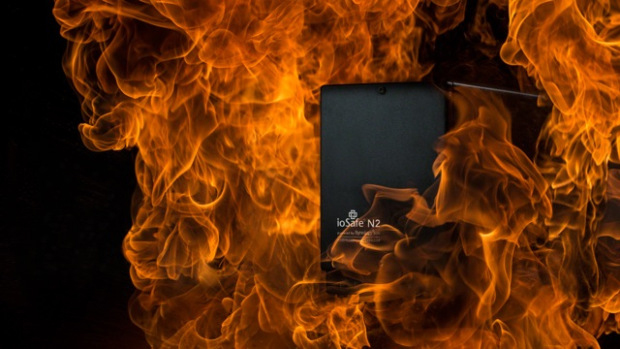When I was taught the finer points of disaster recovery, I was in my twenties and was certainly not expecting to learn that the majority of data loss is caused by planned downtime, not floods and fire. However, this does not mean that you should ignore such natural disasters. The digital age means that more and more people are backing up their data to a storage device and putting in a draw for safe keeping. This of course is moderately acceptable if your just backing up your mothers recipes and risqué photos. However when it’s your company accounts and emails you really ought to have something a little more developed in place.
In an effort to put you on the road to data nirvana, we sat down with Peter Airs, Country Manager at leading data security firm, ioSafe.
Can you tell us a little about your work at ioSafe this year and what major projects you reside over?
We’ve provided backup solutions this year for major high street retailers, numerous primary and secondary schools, the legal profession where moving data offsite is not an option and we name the world’s largest food company among our customers. Anywhere that data is unsecured or backup is a challenge, we can help.
What releases have you worked on this year?
New release products will be announced at CES in January.
As we know, many small businesses and home office users see disaster recovery as a natural disaster such as fire or flood rather than a data or system loss as the result of planned down time. What advice would you offer users looking to implement a backup and disaster recovery program?
My simplest piece of advice is ensure you have multiple backup plans and that at least one doesn’t require any human intervention. If your backup plan involves people taking data off site or manually, changing tapes, putting them in a fire safe etc. It’s a matter of when it will fail rather than if.
We expect that some of our readers wont immediately recognise the dependance of their organisation on their data infrastructure. Can you explain why data loss can be catastrophic to an organisation.
Who are your readers? The world runs on computers, as do all businesses of every size. The computers rely on data to run those businesses. If the data is lost, the businesses cease to run.
We know that implementing a disaster recovery plan can save response and recovery costs. What range of products would you recommend to a SME sized business?
ioSafe of course! The easiest to install, lowest priced, fastest to recover, set and forget disaster recovery system on the planet!
What testing does the ioSafe range undergo and to what extremes can it operate? ioSafe units operate at regular temperatures and conditions.
All ioSafe Solo and NAS will protect your data as follows:
FIREPROOF Protects against data loss in fire up to 1550ºF,1/2 hour Per ASTM E119
WATERPROOF Protects data from flood, full submersion, 10’ depth, 72 hours, fresh or salt water
How important is a cloud or offsite backup program?
Data should be always moved offsite to protect from disaster and theft, ioSafe is a viable alternative or addition to a backup strategy where moving data offsite is a challenge or relies on humans.
What sort of warranty and support does ioSafe offer to it’s new customers?
2 years in Europe. All ioSafe pre populated systems also come with 1 year data recovery service included.
Is it paramount that an IT technician installs the hardware?
No all products are designed to be installed by a user with basic or no IT knowledge.
For those of our readers that find the prospect of coal face IT management alarming, how does the ioSafe range appease those fears?
At its most basic product, ioSafe is a USB hard drive. Surely that’s about the least scary backup method there is? Plug in, drag and drop, your data is protected.
W: www.iosafe.com
Tel: 01635 887 390
Email: iosafe-uk@iosafe.com


